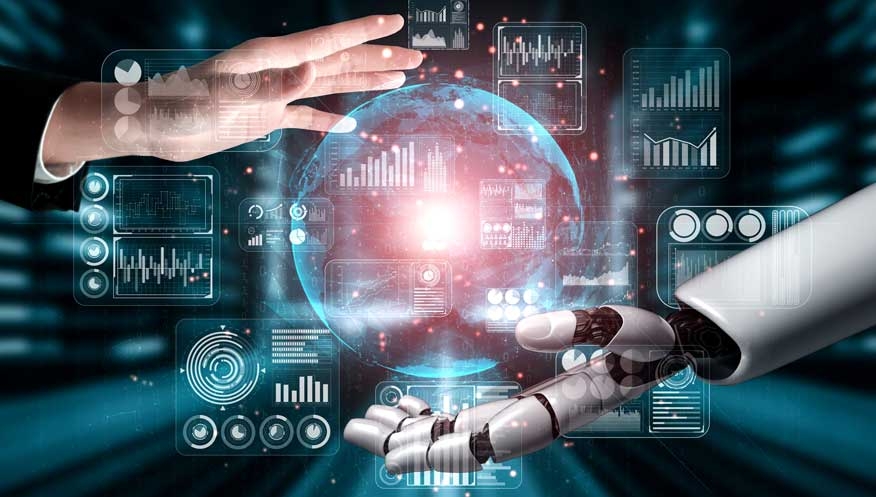
AI is a broad field that encompasses a variety of approaches and techniques for building intelligent systems. At its core, AI aims to create algorithms that can perform tasks that would normally require human-level intelligence, such as recognizing patterns, learning from data, and making decisions. Some common examples of AI include natural language processing (NLP), image recognition, and game playing.
ML is a subfield of AI that involves using algorithms and statistical models to enable machines to learn from data without being explicitly programmed. ML algorithms are designed to improve their performance over time as they are exposed to more data. For example, a machine learning model might be trained to recognize faces in images bhy being fed a large dataset of images labeled with the names of the people in them. As the model is exposed to more data, it will become better at identifying faces in new images.
There are several different types of ML algorithms, including supervised learning, unsupervised learning, and reinforcement learning. In supervised learning, the training data is labeled with the correct output, and the goal is to learn a function that maps inputs to outputs. An example of a supervised learning task might be classifying emails as spam or not spam based on a dataset of labeled emails.
In unsupervised learning, the training data is not labeled, and the goal is to discover patterns or relationships in the data. An example of an unsupervised learning task might be clustering a dataset of customer data into groups based on common characteristics.
Reinforcement learning is a type of ML in which an agent learns by interacting with its environment and receiving rewards or punishments based on its actions. An example of reinforcement learning might be a robot learning to navigate a maze by trial and error.
AI and ML have a wide range of applications in a variety of fields, including healthcare, finance, transportation, and manufacturing. For example, AI and ML can be used to analyze medical images for early detection of diseases, automate financial trading, improve logistics and supply chain management, and optimize manufacturing processes.
Few examples are as:-
1. Autonomous vehicles: AI and ML can be used to enable self-driving cars and other autonomous vehicles to navigate roads, avoid obstacles, and make decisions in real-time.
2. Medical diagnosis: AI and ML can be used to analyze medical images, such as X-rays and CT scans, to detect early signs of diseases or abnormalities. This can enable early diagnosis and treatment, improving patient outcomes.
3. Personalized medicine: AI and ML can be used to analyze patient data, such as medical records and genetic data, to identify personalized treatment options for individual patients.
4. Financial fraud detection: AI and ML can be used to analyze financial transactions in real-time to detect patterns indicative of fraud, enabling early detection and prevention of fraudulent activities.
5. Predictive analytics: AI and ML can be used to analyze data from a variety of sources to make predictions about future events or trends. This can be used, for example, to improve supply chain management or optimize marketing campaigns.
6. Natural language processing: AI and ML can be used to enable intelligent systems to understand and respond to human language, enabling applications such as voice-activated assistants or intelligent chatbots, AI powered blog writing, text modification, language transation, information extraction etc.
7.Personalization: AI can be used to personalize the shopping experience for individual customers based on their past purchases, browsing history, and other data. This can include recommendations for products or services, customized email and advertising campaigns, and personalized search results.
In conclusion, AI and ML are complex and rapidly evolving fields that have the potential to revolutionize a wide range of industries and applications. As more data becomes available and new techniques are developed, we can expect to see even more exciting advances in the field in the future. Image Source
test
Dec. 19, 2025, 4:04 p.m.
test